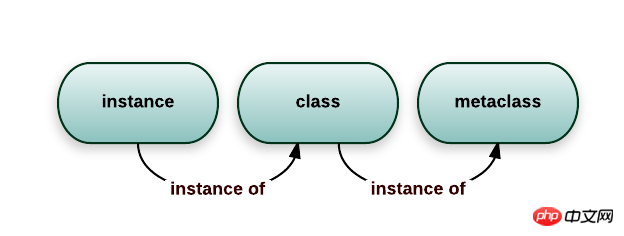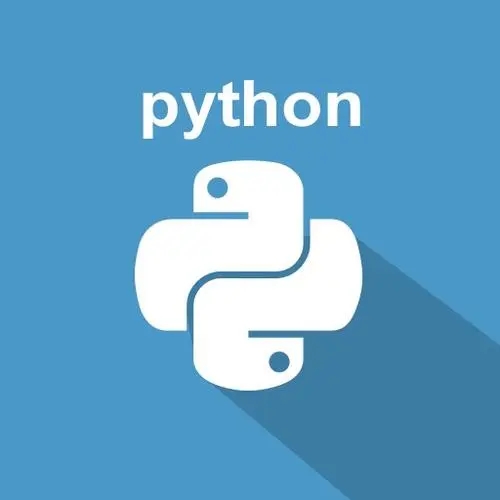这篇文章主要介绍了 python 元类实例解析,此文的主要任务就是给大家彻底讲明白什么是元类,需要的朋友可以参考下
龟叔发明了 Python,然后集成了一堆概念在这门语言里面,比如:迭代器,装饰器,函数,生成器,类,对象,协程等等。
这些概念对初学者似乎没一个好懂的,不过还有比这更难的概念,它是 Python 世界中的造物主,虽然我们很少去直接使用它,但天天都在用,它就是今天的主角------元类。
今天我的任务就是彻底明白什么是元类,一起看看。
要搞懂元类,我们还是先从对象说起。
立即学习“Python免费学习笔记(深入)”;
对象(Object)
Python 一切皆对象,这句话你一定有听说过(现在你就听说了),一个数字是对象,一个字符串是对象,一个列表是对象,一个字典是对象,例如:
>>> i = 10
>>> s = "abc"
>>> nums = [1,2,3]
>>> dicts = {"name":"zhang"}等号右边是对象,左边是给这些对象取的名字,任何对象都有3个关键属性:标识、值、类型。
标识
标识就和人的身份证ID一样,每个对象有唯一ID标识,在整个生命周期中都不会变,你可以认为标识是这个对象在计算机内存中的地址。通过函数 id() 可以查看对象的ID标识。
>>> id(i) 40592592 >>> id(s) 44980584
对象值
对象的第二个属性是值,值很好理解,比如 i 的值是 10,s 的值是 abc,nums 的值就是 1,2,3。
类型
对象还有一个很重要的属性就是类型,任何对象都有属于自己的类型,对象就是由它的类型构造出来的,比如上面的 i 的类型是 int 类型,这个对象就是由 int 构造出来的。s 类型是字符串类型,nums 的类型是列表类型,dicts 的类型是字典类型,它们都是由对应的类型构建出来的。
通过 type() 可以查看对象的类型。
>>> type(i) <class 'int'> >>> type(s) <class 'str'> >>> type(nums) <class 'list'> >>> type(dicts) <class 'dict'>
对象的类型也和ID标识一样,确定好之后就不会再变化了。
类与(实例)对象
除了系统已经定义好了的整数类型,字符串类型,列表等类型之外,我们还可以创建自己的类型,用关键字 class 来定义。例如:
>>> class Person: # 这里的 self 指某个实例对象自己 ... def __init__(self, name): # name 是实例的属性 ... self.name = name # live 是类的属性 live = True
这里的 Person 就是自定义类,类是一个抽象的模版,既不指张三也不是李四,现在我们可以通过调用这个类来构造(实例化)出一个具体的,实在的,有名字的对象出来,这个对象称之为实例对象。
>>> p1 = Person("zhangsan")
>>> p1.name
'zhangsan'
>>>
>>> p2 = Person("lisi")
>>> p2.name
'lisi'这里的 p1、p2 就是实例化之后的(实例)对象,这两个对象的类型都是 Person 类,类与(实例)对象的关系就像一个车辆模具与一辆被造出来的真实车的关系一样。
>>> p1 <__main__.Person object at 0x0195AA30> >>> type(p1) <class '__main__.Person'> # 这里的__main__是模块名称
类也是对象(又叫类对象)
刚刚我们说了一切都是对象,实例(真实车)是对象,类(模具)当然也是对象,因为它也是个实实在在存在的东西,
当 Python 解释器执行到关键字 class 这个指令的时候,在内部就会创建一个名为 "Person" 的类,这个类也是个对象,我们称之为类对象(注意区别实例对象),它一样有ID标识、有类型、有值。例如:
>>> id(Person) 26564024 >>> type(Person) <class 'type'> >>> Person <class '__main__.Person'>
我们注意到这个 Person 这个类对象的类型叫 “type”,也就是说 Person 类是由 type 创建出来的,现在你要记住,p1,p2 是实例对象,而 Person 是类对象。另外,这个 type 是什么鬼?
我们来回顾一下,实例对象 p1 的类型是类对象 Person,Person 的类型 type
>>> nums = [1,2,3] >>> type(nums) <class 'list'> >>> type(list) <class 'type'>
nums 的类型是 list,list 的类型也是 type,字典类(dict)的类型也是 type,所有类的类型都是 type,也就是说所有的类都是由type 创建的。这个 type 就是元类,道生一,一生二,三生万物,元类就是 Python 中的造物主。(元类自己也是对象)

现在我们都知道类(对象)可以使用 class 关键字创建,我们还知道类(对象)的类型是 type,既然知道了它的类型是 type,那么肯定可以通过 type(元类)来创建。
用元类创建类
前面讲到过,type 有一个作用是用于检查对象的类型,其实它还有另外一个作用就是作为元类动态地创建类(对象)。
>>> Person = type("Person", (), {"live":True})
>>> Person
<class '__main__.Person'>Person 就是一个类,它等价于:
>>> class Person: ... live = True ... >>> Person <class '__main__.Person'>
用元类 type 创建类的语法是:
type(类名,基类元组(可以为空), 属性字典)
总结
以上所述是小编给大家介绍的 Python 元类实例解析,希望对大家有所帮助,如果大家有任何疑问请给我留言,小编会及时回复大家的。在此也非常感谢大家对本站网站的支持!
相关推荐:
以上就是Python 元类实例解析_python的详细内容,更多请关注php中文网其它相关文章!

python怎么学习?python怎么入门?python在哪学?python怎么学才快?不用担心,这里为大家提供了python速学教程(入门到精通),有需要的小伙伴保存下载就能学习啦!

Copyright 2014-2025 https://www.php.cn/ All Rights Reserved | php.cn | 湘ICP备2023035733号